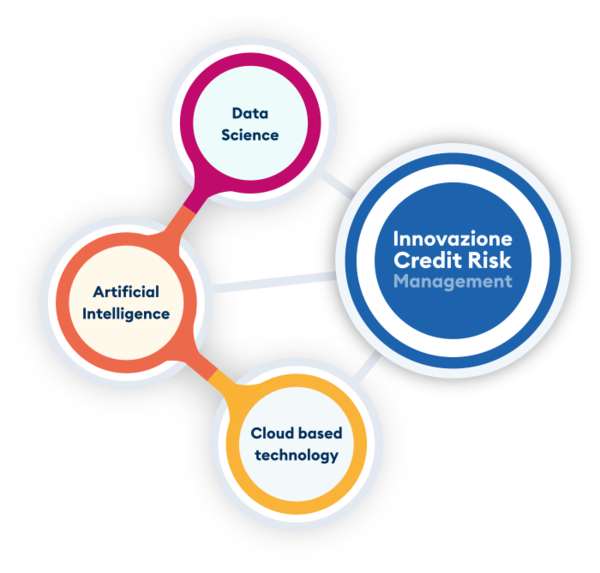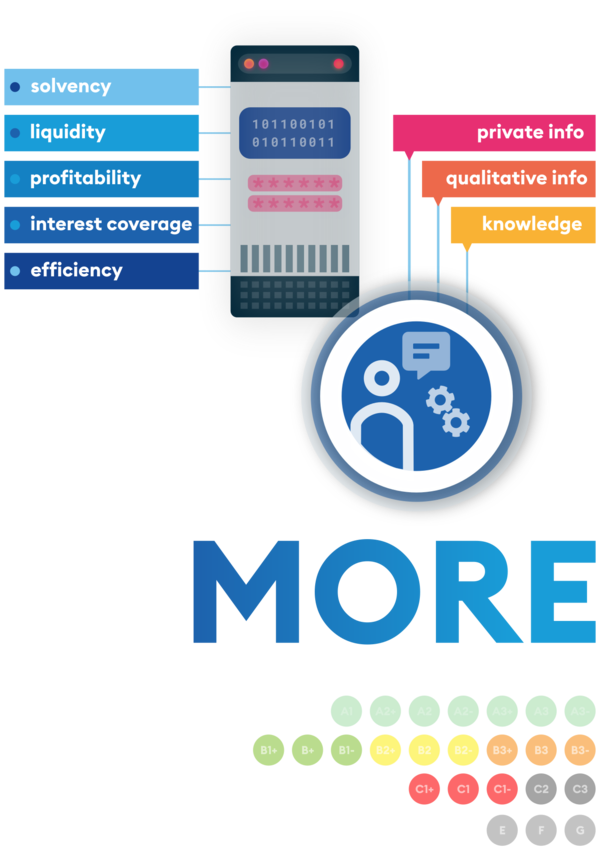modefinance,
a Credit Rating Agency
Rely on the European FinTech Rating Agency, to obtain more transparent and trustworthy credit risk assessments
The importance of relying on an official rating
modefinance is registered as a credit rating agency in accordance with the Article 16 of the European Regulation N.1060/2009 and following, and is authorized to issue solicited and unsolicited credit ratings on non-financial companies and banks.
All the ratings issued by modefinance are comparable through the Mapping. To access all the rating issued as well as all detailed information regarding the rating process, the methodologies used and any other legal information pursuant to Regulation N.1060/2009, visit cra.modefinance.com.
How do we integrate AI into our ratings?
A FinTech approach, where the application of data science technologies and algorithms is integrated with the expertise of our financial analysts, in order to provide an innovative service in the credit rating assessment of companies and banks
Transparent
Our Credit Ratings are processed with MORE, a proprietary AI-based methodology, core of all our rating activities, supervised and tested on a regular base.
Objective
The availability of company information, processed on a statistical basis, allows our financial analysts to operate on a unique and objective database, and to specifically focus on evaluating the qualitative conduct.
Prompt
We process financial information with highly automated methodologies, for a quick and steady response for the benefit of users, who require timely access to credit rating information, towards real-time.
Competitive
The automation of data collection -related to millions of companies- allows us to contain the cost and develop a profitable, highly-skilled rating assessment, able to compete with the traditional ratings market.

Data science & Artificial Intelligence
We learn, develop, and apply new technologies to companies' and institutions' credit risk assessment.
We have developed a proprietary methodology that combines our data science skills, Analytics background, and Artificial Intelligence algorithms, and making these available for our multidisciplinary team, capable of developing web and cloud-based systems with significant savings in costs and resources, and less invasiveness in any company's daily procedures and financial activities.

MORE, the basis of our credit ratings
Algorithms and financial analysts
Our internally developed MORE rating assessment methodology is set in two steps:
- a quantitive evaluation of the balance sheet data, resulting in a credit score;
- a qualitative analysis, fundamental for the definition of credit risk; the actual credit rating, with a human intervention -the rating analysts department, responsible for the analysis, evaluation, issuance and monitoring phases.
Interested in our credit ratings?
Fill out the form, and one of our accounts will get in contact with you for more detailed information and a complete overview of our credit rating services
Get in touch
